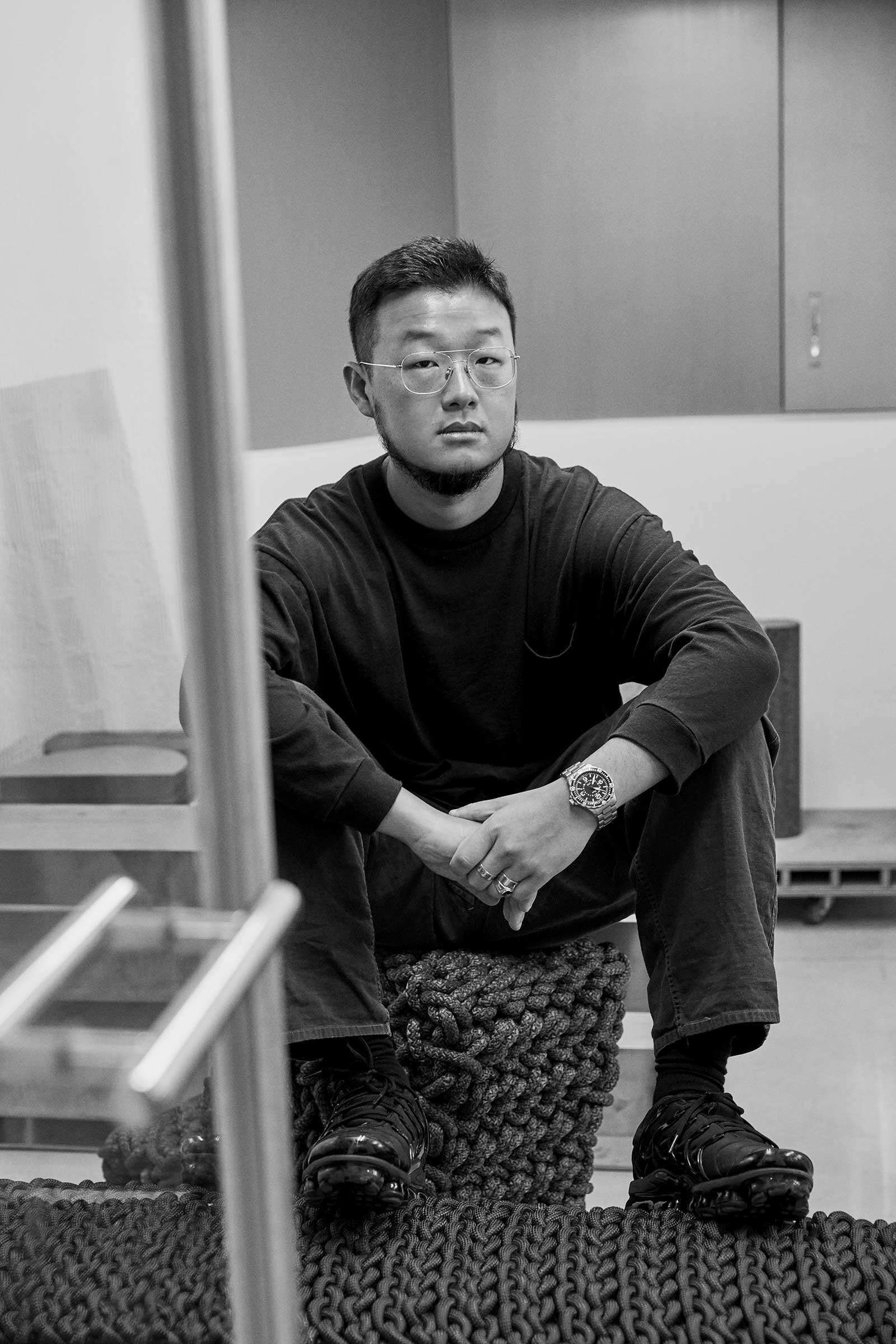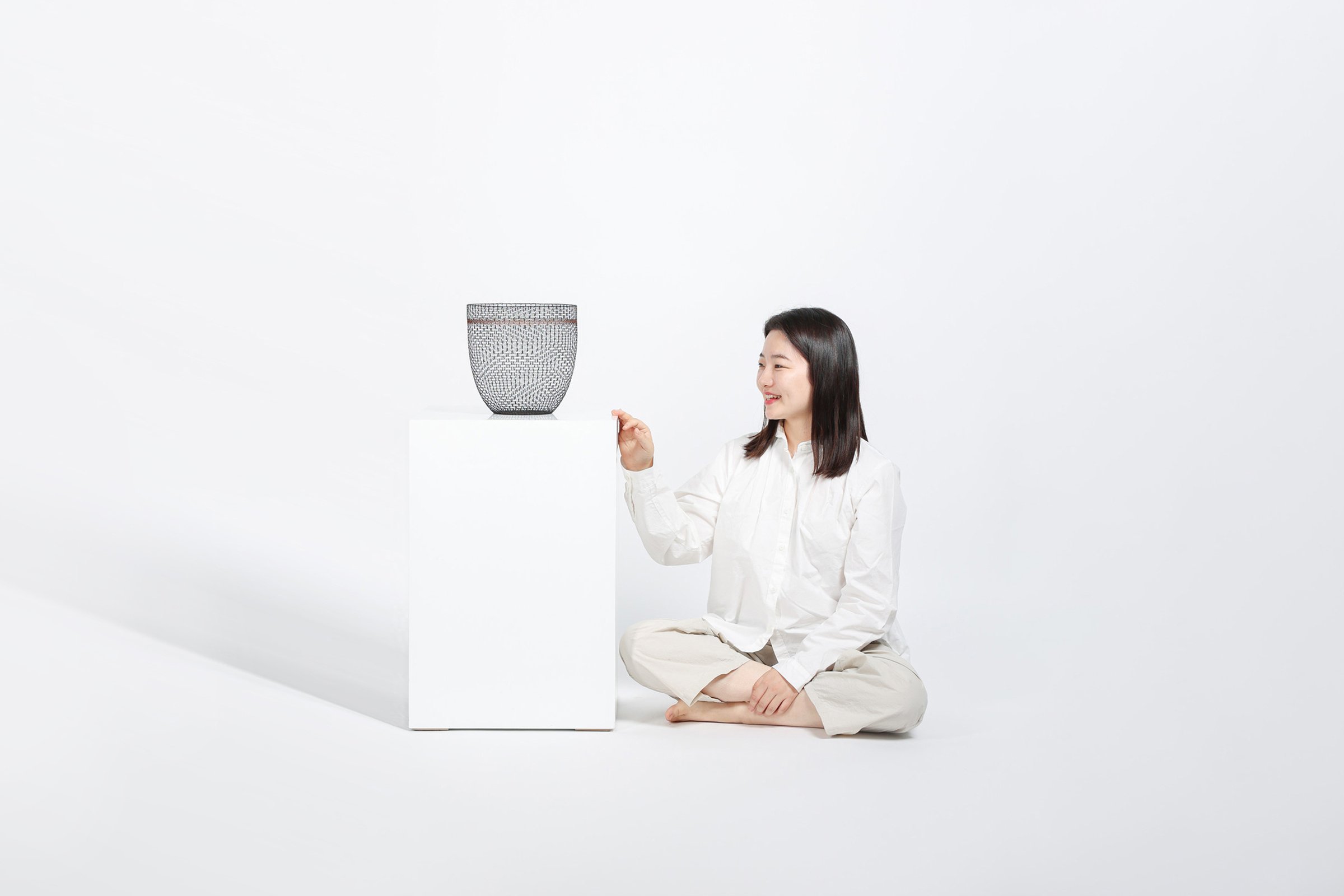A New Wave

A survey of some of the designers making names for themselves both locally and on the international stage
The old Korean saying ‘A decade changes mountains and streams’ might be the best way to explain the state of the country’s design scene.
The current generation of Korean designers, most of whom are under 40 with their own practices, has played a pivotal role in the country’s design movement. A number have exhibited at international design events and captured the attention of global media. Now they’re working with influential brands like Hermès and Iittala, as well as Korean multinationals such as Samsung and Amorepacific. Interestingly, many of the designers attribute this sea change to one person in particular: Kwangho Lee.
Lee, now 38, has proved that a Korean designer can draw global attention to their generation. His Knot series of light fittings was introduced on foreign stages and acclaimed in renowned design magazines, then fashion labels like Fendi and Theory began to approach him with collaboration offers. His work is also in the collections of major art institutions including M+ in Hong Kong, Leeum Samsung Museum of Art in Seoul and the San Francisco Museum of Modern Art.
Just around the corner from Lee’s studio in Seongsu, an old industrial area known as the Brooklyn of Seoul, is the studio of another designer, Jeonghwa Seo. The furniture and interior designer, and graduate of the Design Academy Eindhoven, is known for his explorations into materiality, often combining various materials into captivating design-art pieces. Support from government-affiliated organisations helped Seo establish himself as a designer. ‘Organisations like the Korea Craft & Design Foundation have programmes that support emerging artists. You have to use that time to find your identity and become independent,’ he says.
The cultural foundations affiliated with conglomerates like Samsung and Hyundai Motor Group also run support programmes, emphasising the preservation of tradition and promoting the local creative scene. For example, in 2018 designer Jungyou Choi collaborated with a traditional master metalworker as part of the Korean heritage preservation society yéol’s Young Craftsman of the Year Project. yéol’s president had worked at Hyundai Motor Group for more than three decades before founding the cultural group.
Choi, who studied at the ecal in Switzerland and at the Design Academy Eindhoven, and her husband Kyuhyung Cho, who graduated from Konstfack in Stockholm and began his career as a graphic designer, founded Seoul- and Europe-based Studio Word in 2018. Their brand aims to create neutral objects with a clear purpose. According to Choi, one of the reasons that traditional Korean styles seem to be more popular in contemporary design is because of an imbalance in the design field. Between the premium and the affordable- but-bland markets — both dominated by large corporations — an alternative market is only just beginning to develop, and up until now cultural foundations and institutions supported and encouraged more traditionally ‘Korean’design.
Industrial designer Jiyoun Kim, a winner of the iF and the Red Dot design awards, is also a great mediator. Having previously worked at mobile phone manufacturer Pantech and advertising agency HS Ad, he has since consulted for major corporations like Samsung and LG. And on the back of their design of a beauty device for Amorepacific, Kim and his team are increasingly receiving commissions from Australian and British clients. ‘This country has many consumer electronic makers and a prosperous beauty market. On a global scale, Korea has fertile soil for designers to grow,’ he says.
Designer EJ Pak gained experience working in architectural firms before founding Studio EJ in 2013. Pak’s favourite part of working in Seoulisthatsmallmanufacturingworkshops are numerous in the city’s central areas, and as a designer, it’s easy to make things happen. For her Printed Light series, she designed tables and stools that play with the patterns of natural light and shadows. A similar sense of poetry is found in the work of furniture designer Saerom Yoon. As a response to the rise of AI and 3D printing, Yoon laboriously handcrafts each of his pieces to evoke sensibilities that machines are unable to produce. His ethereal objects are made from transparent acrylic resin that he dyes so that the resulting colours resemble the textures of nature painted in watercolours. Also working with resin, designer Hee Kyung Sul, known as Cleverclaire, uses the material’s properties of transparency and durability to create striped objects in bold colours.
Having only founded his studio in 2013, Jinsik Kim, a 2019 Wallpaper* Design Awards winner, has already collaborated with international brands like Christofle, Baccarat, Hermès and design gallery Seomi International, and exhibited at major design fairs around the world. For Kim, his childhood experiences of the Korean countryside where his grandparents lived still provide endless inspiration, evident in the curvaceous, organic forms and natural materials that figure prominently in his work.
Sharing this interest in raw materials is Hyungshin Hwang, though his source of inspiration and sense of geometry are somewhat different. ‘I grew up in an apartment complex and was always familiar with the scenes of redevelopment,’ he says. ‘My unit- driven monotone designs are attached to these memories.’
Jiyoun Kim, sitting in his studio in the Cheongdam neighbourhood, sums up the context within which these designers are working: ‘I think the concept of Korean style has changed,’ he says. ‘Now it results in something infused with the user’s way of life. If it was about a clear motif back then, it’s become more sophisticated. I think all cultural and creative elements are closely intertwined and move together.’
Text / Yeah Joon Han-Mann
Kyuhyung Cho of Studio Word designed the stackable Balloon chair for high-end Korean furniture brand mete
Image copyright mete
01
Kwangho Lee is one of South Korea’s more established designers, and is credited for drawing attention to the country’s design scene. Lee rose to acclaim with his Knot series, pictured here as part of the 2017 group exhibition midtown in New York
Left image by Minwha Maeng Right image courtesy of the artist and Salon 94
02
Jeonghwa Seo imbues contemporary pieces with Eastern aesthetic sensibilities. For his Material Container series, he experimented with various combinations of stones, woods and metals
Images courtesy of Jeonghwa Seo
03
Kyuhyung Cho (left) and Jungyou Choi (right) are the founders of Studio Word. Pictured here is a piece from Choi’s collection of home accessories designed with discarded Hermès umbrella handles for the brand’s petit h line
Image copyright ecal × Hermès petit h
04
Jiyoun Kim works across various disciplines including craft, furniture, electronic devices, interiors and branding. Kim founded lifestyle brand Usetool Company together with Ventures Lab, and their toothbrush and steriliser set won an iF Design Award in 2018
Images courtesy of Jiyoun Kim Studio
05
Having studied furniture design and interior architecture, designer EJ Pak has a unique approach through which she creates pieces like the Layered table, which incorporates intelligent mechanisms with minimal detailing
Images courtesy of studio EJ
06
Saerom Yoon’s handcrafted objects are imbued with a surprising sense of poetry. Pieces in his Crystal series were made by dyeing acrylic resin in different stages and in contrasting hues
Images courtesy of Saerom Yoon
07
Hee Kyung Sul, known as Cleverclaire, is drawn to bold colours and experimenting with the properties of resin. The Technicolor stool/table pictured here resembles marble, an effect achieved by applying layers of coloured epoxy in varying concentrations
Images courtesy of Cleverclaire
08
Jinsik Kim has worked with brands such as Baccarat and Hermès. His Weight collection of design-art sculptures explores the natural qualities and forms of stone
Left image by Park Sangkuk Right image by Sangpil Lee
09
Hyungshin Hwang’s geometric forms are inspired by urban architecture, as seen in this stainless steel stool from his Layered series
Images courtesy of Hyungshin Hwang
























